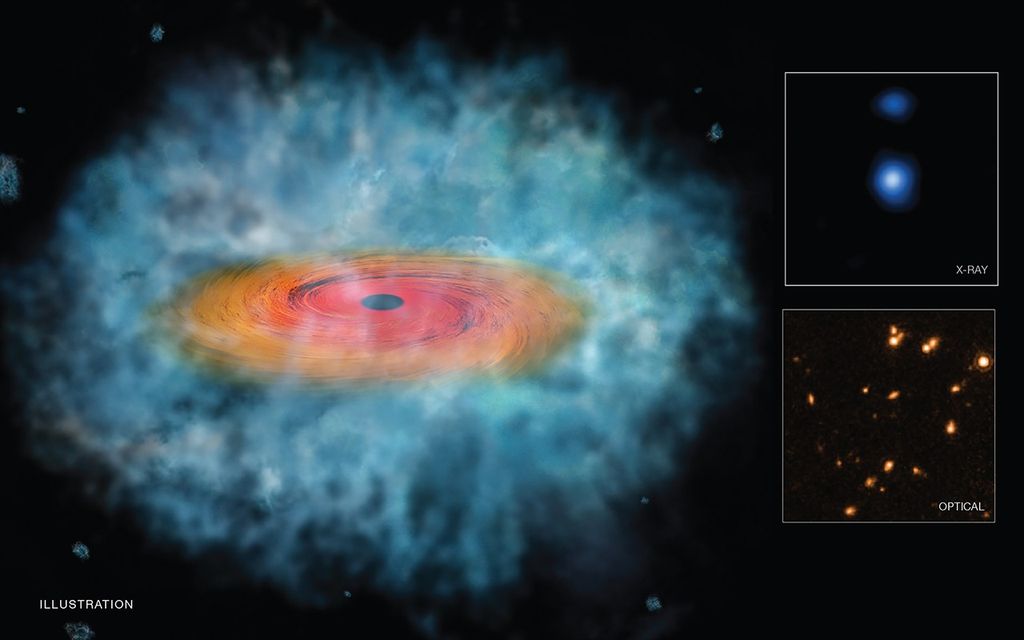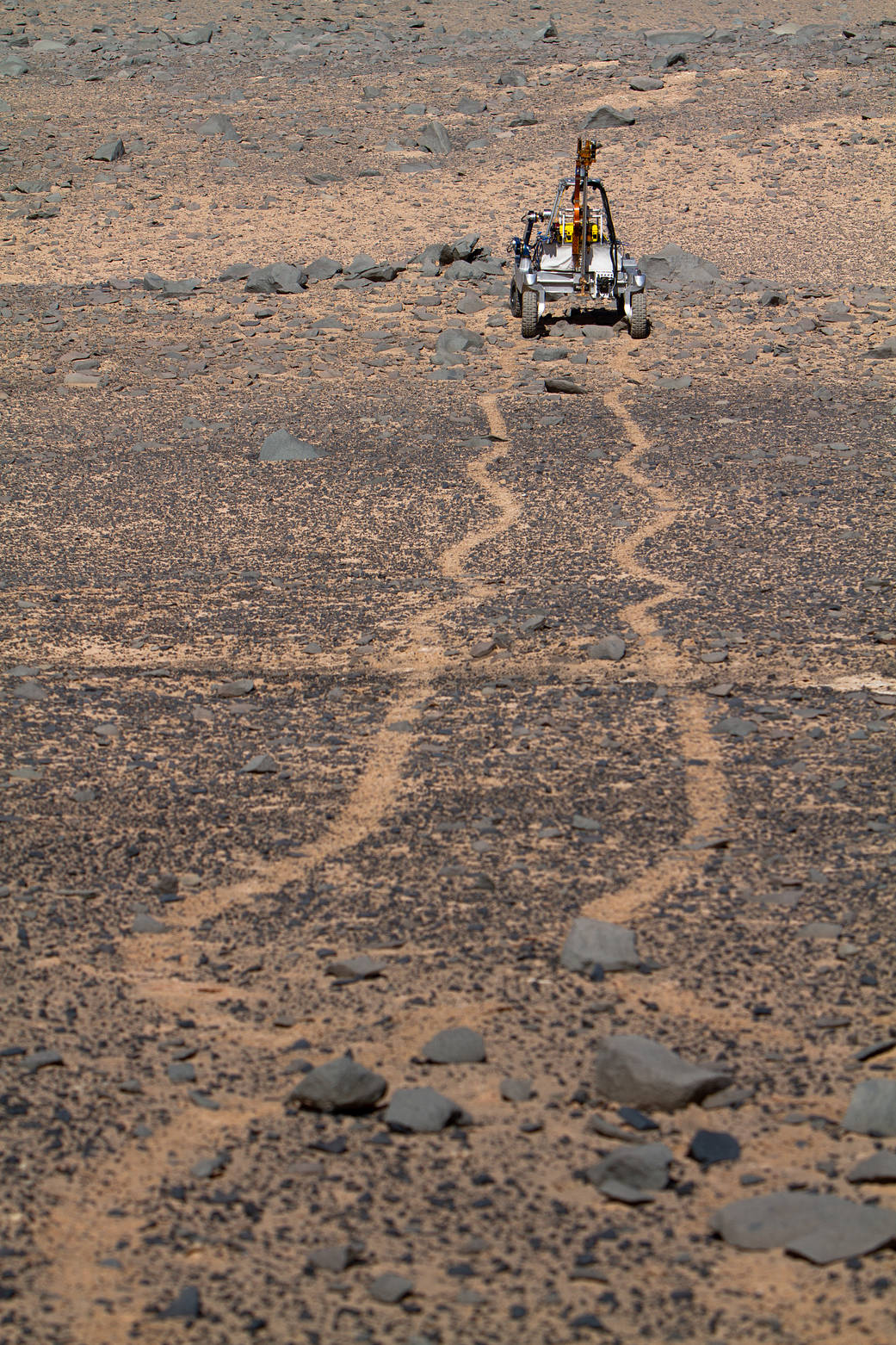The ARADS astrobiology rover, navigating autonomously, leaves its tracks in 2017 on a very Mars-like landscape, in this photo from Chile’s Atacama Desert. The location is used as an analog for, or good representation of, the conditions on Mars, due to its similar soil chemistry, extreme dryness and very low levels of life. Even bacteria are hard to find in this soil, making it a good place to test the ARADS system’s ability to look for life in an extreme environment like the surface of Mars.
+++
The Atacama Rover Astrobiology Drilling Studies, or ARADS, project is designing tools and techniques that could be used to search for life one day on Mars or other places in the Solar System. The team’s prototype rover combines the ability to move across the surface, drill down to collect soil samples, and feed them to several life-detection instruments on board. The extreme conditions of Chile’s Atacama Desert provide one of the most Mars-like environments on Earth, where the team can test and refine these technologies and methods.
ARADS is led by NASA’s Ames Research Center in California’s Silicon Valley. Partners include NASA centers Goddard Space Flight Center in Greenbelt, Maryland, and the Jet Propulsion Laboratory in Pasadena, California, as well as Johns Hopkins University in Baltimore, Maryland, Honeybee Robotics in New York, the University of Antofagasta and CampoAlto SpA, both in Chile, and Spain’s Center for Astrobiology.




























